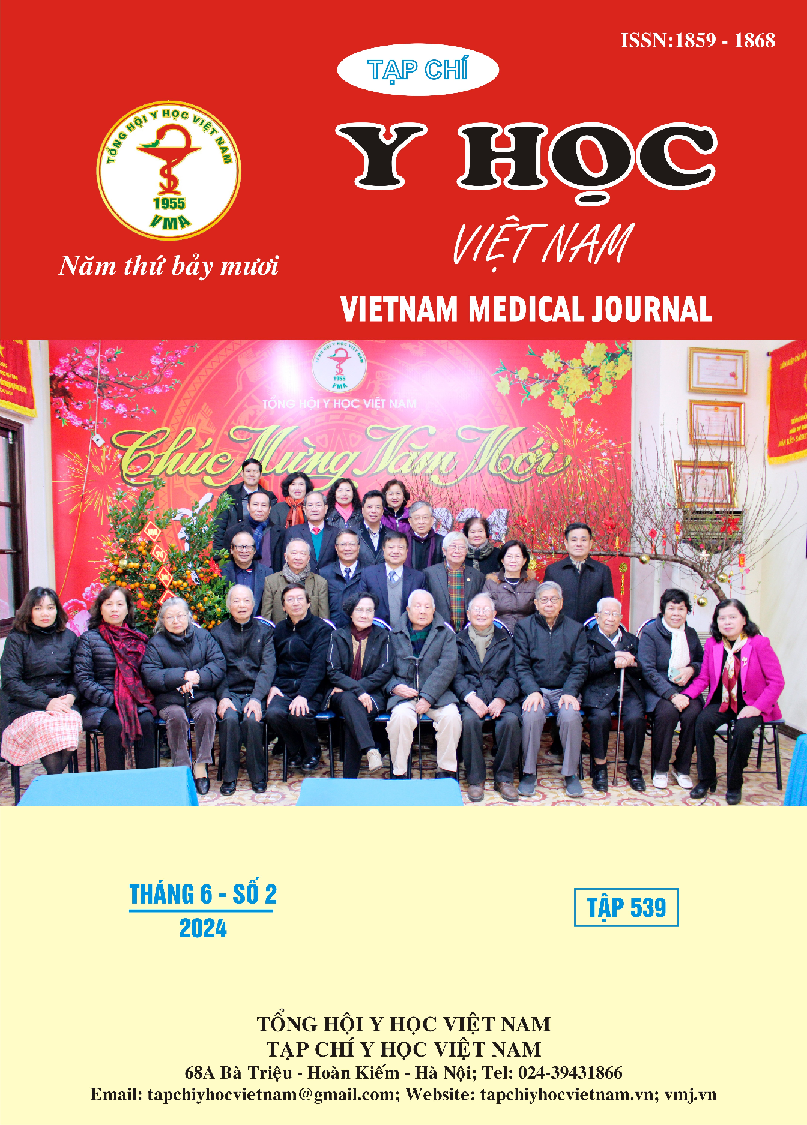USING MDS-UPDRS SCALE TO ASSESS THE ACTIVITY LEVEL IN PATIENTS WITH PARKINSON’S DISEASE
Main Article Content
Abstract
Backgrounds: The effects of neurological disorders are the leading cause of disability worldwide, with an increasing trend due to the aging of the population, including Parkinson's disease. Parkinson's disease is a degenerative nervous system disorder common in the elderly, affecting 1% of the population over 65 years of age. It is estimated that by 2040 there will be about 12 million people worldwide with Parkinson's disease. In Vietnam, according to 2016 data, there are about 65,000 people with Parkinson's disease. Subjects with Parkinson's disease will decline in function over the years and are at risk of disability if they are not properly assessed for a disease state in which motor factors directly affect daily activities. days needing special attention and specific evaluations. From there, appropriate movement improvement intervention programs are established. Objectives: Assessment of the level of movement and related factors in Parkinson's disease patients in Ho Chi Minh City. Methods: A cross-sectional study on 106 subjects with Parkinson's disease undergoing inpatient and outpatient treatment at the University of Medicine and Pharmacy Hospital in Ho Chi Minh City. Ho Chi Minh City from August 2022 to September 2022. Patients were assessed for mobility using the MSD-UPDRS scale part III. Results: The mean MDS-UPDRS Part III score was 49.7 with a standard deviation of 18.1 points). In which, the subjects with the problem of "Running when moving in the left hand" accounted for 67% and "Running when moving in the right hand" was 68.9%. in the very mild group, the severe and moderate group focused on "Postural instability" with the rate of 10.4% and 18.9%, respectively. Conclusions: Movement level in patients with Parkinson's disease are at average level according to the MDS-UPDRS scale.
Article Details
Keywords
: MSD-UPDRS, Parkinson’s disease
References
2. H. Deng, P. Wang, and J. Jankovic, "The genetics of Parkinson disease," Ageing Res Rev, vol. 42, pp. 72-85, Mar 2018, doi: 10.1016/j.arr.2017.12.007.
3. T. N. T. Lê Minh, "Đặc điểm lâm sàng về chức năng vận động của bệnh Parkinson và phân độ chẩn đoán theo Hoehn and Yahr: Một khảo sát tiền cứu 32 trường hợp," Tạp chí Y học thành phố Hồ Chí Minh, vol. 13, p. 7, 2009.
4. T. N. Tran et al., "The effect of Non-Motor symptoms on Health-Related quality of life in patients with young onset Parkinson's Disease: A single center Vietnamese Cross-Sectional study," Clin Park Relat Disord, vol. 5, p. 100118, 2021, doi: 10.1016/j.prdoa.2021.100118.
5. M. J. Armstrong and M. S. Okun, "Diagnosis and Treatment of Parkinson Disease: A Review," JAMA, vol. 323, no. 6, pp. 548-560, Feb 11 2020, doi: 10.1001/jama.2019.22360.
6. G. R. M. S. Cezar Thomas R. Suratos, et al, "Quality of life and Parkinson’s disease: Philippine translation and validation of the Parkinson’s disease questionnaire," (in english), Journal of Clinical Neuroscience, vol. 54, p. 4, 2008.
7. S. F. Christopher G. Goetz, et al, "The MDS-sponsored Revision of the Unified Parkinson’s Disease Rating Scale," International Parkinson and Movement Disorder Society, 2008.
8. U. N. L. H. Tai Ngoc Tran, et al, "The effect of Non-Motor symptoms on Health-Related quality of life in patients with young onset Parkinson’s Disease: A single center Vietnamese Cross-Sectional study," Clinical Parkinsonism & Related Disorders, vol. 5, p. 5, 2021.
9. A. J. Noyce et al., "Meta-analysis of early nonmotor features and risk factors for Parkinson disease," Ann Neurol, vol. 72, no. 6, pp. 893-901, Dec 2012, doi: 10.1002/ana.23687.


